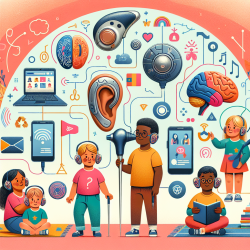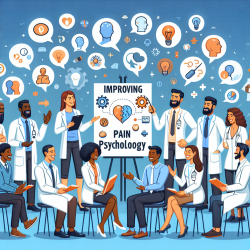Cochlear implants (CIs) and brain stem implants have revolutionized the way we address hearing impairments, particularly in children. The research article "Technical devices for hearing-impaired individuals: cochlear implants and brain stem implants - developments of the last decade" by Joachim Müller offers significant insights into these advancements. This blog will distill the key findings and suggest ways practitioners can leverage this information to enhance outcomes for hearing-impaired children.
Key Advancements in Cochlear Implants
Over the past decade, cochlear implants have seen substantial improvements, particularly in speech understanding and the age at which children can be implanted. Here are some notable advancements:
- Speech Coding Strategies: Enhanced speech coding strategies, such as Continuous Interleaved Sampling (CIS), have significantly improved speech understanding.
- Bilateral Implantation: Bilateral cochlear implantation has shown remarkable benefits in speech understanding in noise and directional hearing.
- Younger Implantation Age: Increasingly younger children are being implanted, which is crucial for optimal auditory-verbal development.
Implementing These Findings in Practice
To optimize outcomes for hearing-impaired children, practitioners should consider the following strategies:
- Adopt Advanced Speech Coding Strategies: Utilize implants that incorporate the latest speech coding technologies to maximize speech understanding.
- Promote Bilateral Implantation: Advocate for bilateral implantation, especially in children, to improve spatial and directional hearing.
- Early Diagnosis and Intervention: Implement newborn hearing screenings and early intervention programs to identify candidates for early cochlear implantation.
Encouraging Further Research
While significant progress has been made, there are still areas that require further research:
- Speech Understanding in Noise: Modern cochlear implants still struggle with speech understanding in noisy environments. More research is needed to address this challenge.
- Customizing Implants: Investigate ways to customize implants based on individual anatomical and physiological differences to improve outcomes.
- Long-Term Outcomes: Conduct long-term studies to assess the impact of early implantation on the overall development of children.
Conclusion
By staying informed about the latest developments in cochlear and brain stem implants, practitioners can significantly enhance the quality of life for hearing-impaired children. Continuous education and research are vital for driving these advancements forward.
To read the original research paper, please follow this link: Technical devices for hearing-impaired individuals: cochlear implants and brain stem implants - developments of the last decade.










